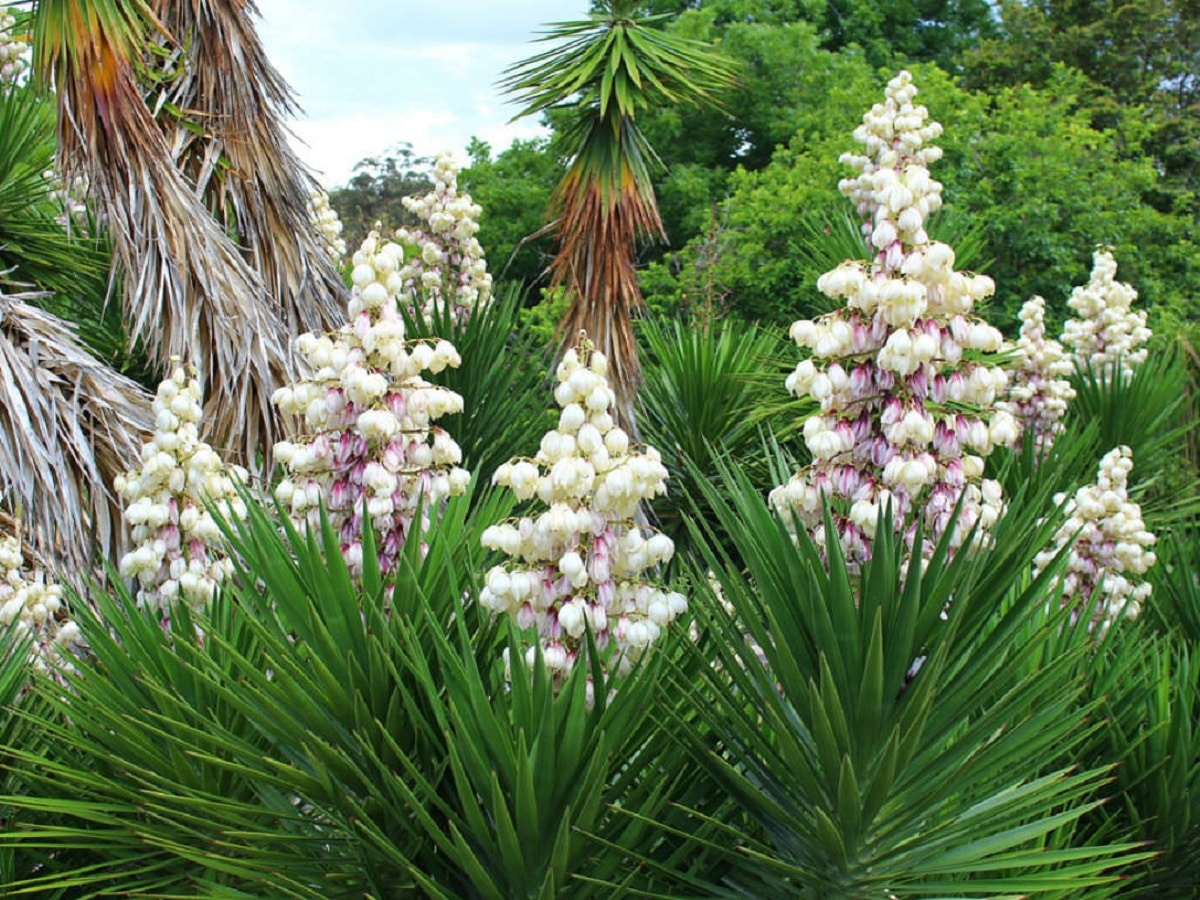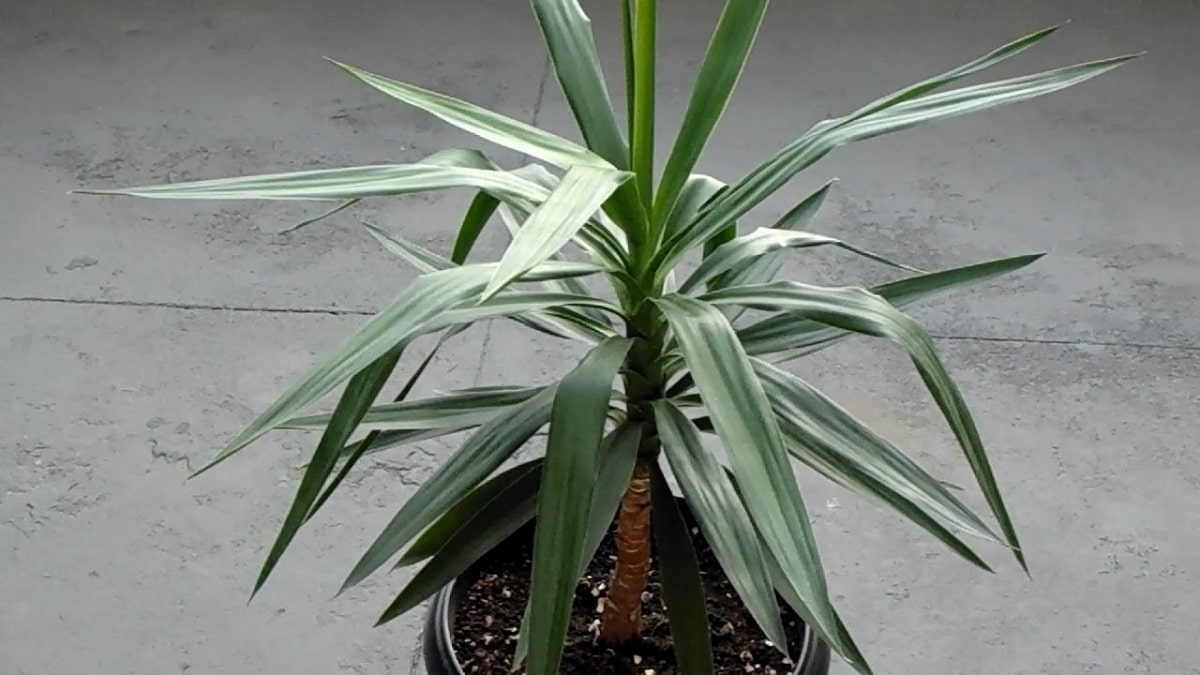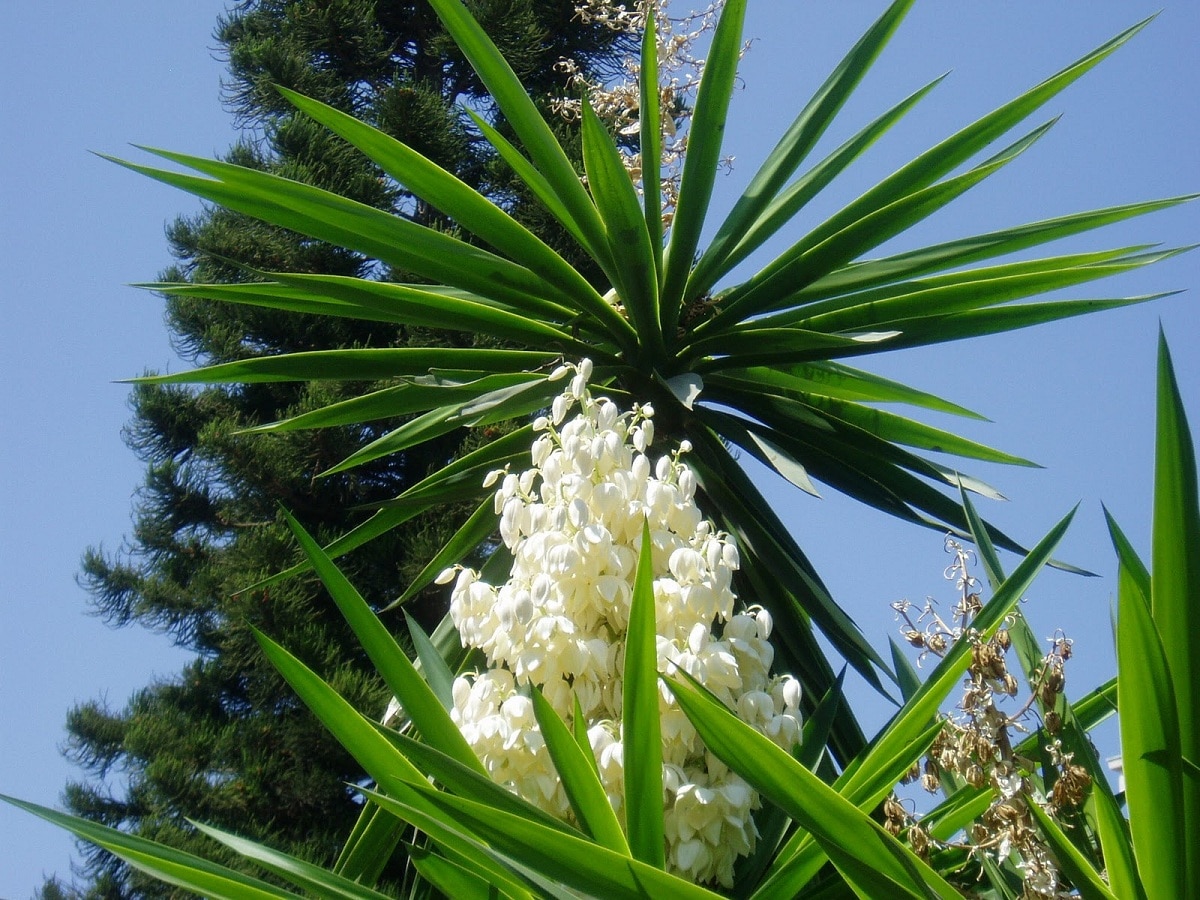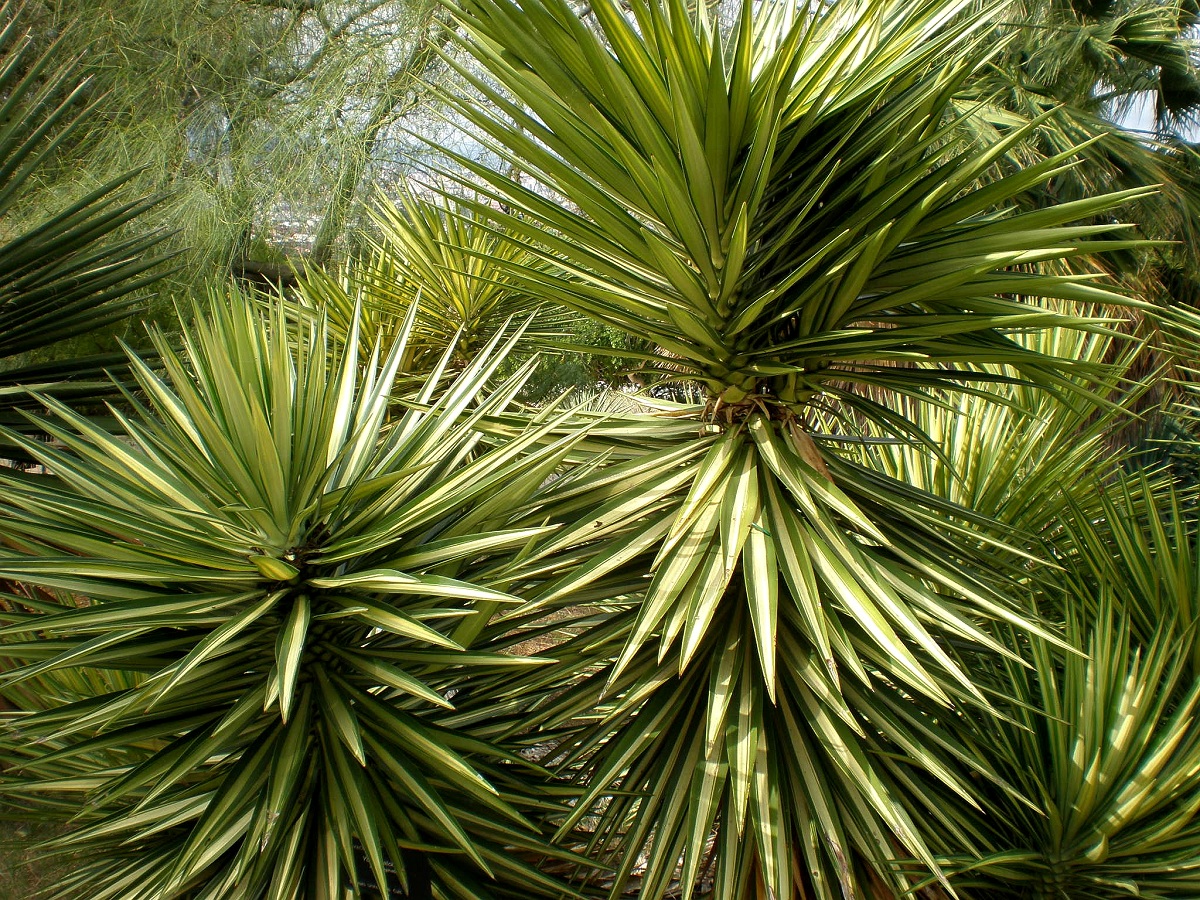
The Yucca genus presents a great variety of species of succulent and perennial plants of the shrub and arboreal type. They have plants with a rosette growth, evergreen and very resistant. Most of the species of this genus are acaules or lack a stem. Other species have a single or branched stem with the arranged rosette of rigid or flexible leaves. The Yucca plant care They are quite simple but you have to take into account some aspects.
Therefore, we are going to dedicate this article to tell you all the characteristics and care of Yucca plants.
Key features

All the cassava species they are generally arboreal, herbaceous or woody plants, with rosettes growing at the top. The lanceolate leaves are grouped at the ends of stems and branches. They are usually flat or concave, strong or wavy. The edges of the leaves are smooth, filamentous or slightly serrated, and the apex of each leaf usually ends with a thick and hard spine. The inflorescences appear as long, erect or hanging panicles, with abundant hermaphrodite flowers, globose or campanulate and of light tones.
The fruit is a fleshy, uncracked capsule or a hard, dry, cracked capsule. The small, compressed seeds are dark in color. Most cassava plants have thick, waxy skin to avoid water loss due to evapotranspiration. In fact, they store water in thick, fleshy leaves, and the root systems of some species are dedicated to storing fluids.
In a dry environment, some yucca plants have an oily coating on the surface of their leaves, which is good for hydration. In fact, during dry periods, plants will drop their leaves to reduce water loss due to sweating.
The ribbed leaves of some species guide dew and precipitation to the roots. Similarly, the dry leaves stacked around the trunk as well They can protect plants from strong solar radiation. Most cassava plants grow vigorously after wildfires, making them highly adaptable to fire.
Habitat and area of distribution

These species show great adaptability to various ecological and climatic conditions in tropical and semi-temperate regions (generally arid or semi-arid regions). In fact, they are found in rocky deserts, badlands, grasslands, grasslands, mountains, low-lying forests, and coastal areas.
Its natural distribution area extends throughout the tropical zone of the American continent. Yucca Guatemala is very common in Mexico and Guatemala, and is also distributed throughout the southwestern United States in Baja California. Some species have adapted to climatic conditions from Canada to the central states of Alberta, where the species is Yucca glauca ssp. Albertana. What's more, They are popular in the coastal areas of the southeastern United States, from Texas to Maryland and the Gulf Coast.
Various species and varieties are native to the Caribbean Islands, being common in the coastal lowlands and xerophilous scrub near the coasts. The species stringy yucca it is common in coastal sandy areas.
Yucca plant care

Yucca plants spread through seeds, suckers or stem and root cuttings. They are very virgin plants that can tolerate sandy and dry soils with almost no watering and sudden changes in temperature. They grow and develop in sunny places or in partially shaded places. Most plants are widely used in landscaping and are ideal for gardens, terraces or parks due to low maintenance costs. When planting seeds, enough space must be provided around so as not to compete with other species as they grow and grow in size.
Yucca plant care is not very complicated. They can tolerate dry, sandy soils as if they hardly need watering. They are very rustic plants that can withstand quite low temperatures. They grow well in sunny or semi-dark conditions and can survive for several years if stored as houseplants.
In gardening, they are ideal for planting in rockery along with other succulents, creating a semi-desert environment with aridity, stones and gravel. If we choose to grow them as isolated specimens, It is important to know the size that they will acquire over the years.
They are very rustic, and if there is not excess watering and a lot of sunlight, they are usually free of pests and diseases. At most, they can be attacked by mealworms, which can be eliminated by systemic treatment with pesticides recommended by professionals at the point of sale where these products are purchased.
Care of the main Yucca species
We are going to see the most basic care required by some of the main species of this genus most used by the community.
The first species is the desmetian yucca. They are used in pots on terraces and terraces, slopes, rockeries and gardens in dry and low-maintenance areas. They are in contrast to other green leafy plants. Although they can withstand frosts below -5ºC, they prefer to be in direct sunlight or in semi-shady places and hot climates.
As long as the drainage is good, they can grow in poor sandy soils. The transplant is carried out in spring. Their ability to withstand drought is very good, but they can water regularly in summer and wait for the soil to dry out completely.
Annual fertilizers based on Slow-release mineral fertilizers are sufficient in the spring. Pruning is not necessary, but it is recommended to remove dry or wilted leaves. They are resistant plants, and if we do not water excessively, they do not usually cause pests or diseases.
The second floor is the yucca filifera. They are often used in groups in gardens as isolated specimens and rockery. They can be planted in pots when they are young. It can thrive in full sun and partial shade, and in hot climates. Although they can withstand some frosts in winter, it is best not to expose them to temperatures below 4ºC.
They adapt to any soil, be it sterile, sandy, stony or clayey. Water moderately and wait until the soil is dry before watering. They resist drought well, but not floods. They like light compost-based fertilizers towards the end of winter.
Pruning is not necessary, but flower panicles may wilt. They are plants resistant to pests and diseases, so I am afraid of overwatering them. They can multiply from the sandy substrate in seeds sown in spring.
I hope that with this information you can learn more about the care of Yucca plants.